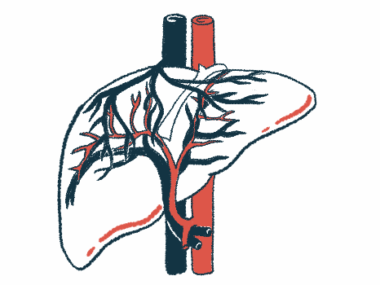Triple blood test may be best at diagnosing biliary atresia
3 blood markers can help differentiate biliary atresia from similar diseases
Written by |

The blood levels of two proteins, called MMP-7 and SOX9, are significantly higher in infants with biliary atresia than in those with similar liver diseases, and are linked to liver scarring and survival in these children, a study shows.
However, measuring the levels of both MMP-7 and SOX9, in combination with those of the liver enzyme GGT, showed greater accuracy in differentiating biliary atresia from similar liver diseases than tests measuring either protein alone.
The study, “The value of serum MMP-7 and SOX9 levels in the diagnosis and prognosis of biliary atresia,” was published in the Journal of Pediatric Surgery Open.
Biliary atresia is rare liver disease that affects infants
Biliary atresia is a rare liver disease that affects infants. It’s marked by the blockage or absence of certain bile ducts that transport the digestive fluid bile from the liver, where it is produced, to the small intestines.
This leads to slowing or stalling of bile flow, a condition called cholestasis, and bile buildup in the liver, which can cause liver damage and leakage of bile acids into the bloodstream.
First-line treatment for biliary atresia is a surgical procedure called Kasai portoenterostomy, in which a new tube that can carry bile out of the liver is created. The surgery has a high success rate when infants are younger than 60 days (two months), while surgery after the age of 90 days (three months) has a lower success rate and may require a liver transplant in advanced stages.
Therefore, early diagnosis and treatment are important to achieve the best outcomes for infants with the disease.
“Currently, the early diagnosis of BA [biliary atresia] is mainly based on clinical manifestations, laboratory and imaging tests, and there is still a need for more reliable diagnostic markers to assist in the diagnosis,” the team of China-based researchers wrote.
The team and others have previously shown that production of the MMP-7 enzyme and the SOX9 protein is markedly higher in the livers of babies with biliary atresia, where they are believed to contribute to liver scarring, or fibrosis.
Study assessed diagnostic potential of MMP-7, SOX9
Now, the team investigated the potential of measuring blood levels of MMP-7 and SOX9 to diagnose biliary atresia and predict its outcomes.
They analyzed blood samples from 44 infants (32 girls and 12 boys) with biliary atresia who had undergone the Kasai procedure and 24 infants (11 girls and 13 boys) with other liver diseases also marked by cholestasis (control group).
Among biliary atresia patients, jaundice (a common symptom marked by yellowing of the skin and eyes) was cleared in nearly half the patients (45.4%) six months after surgery. In addition, 56.8% underwent liver transplantation or died of liver failure, and 41.7% of these infants still had their liver three years after the Kasai procedure.
Blood tests revealed biliary atresia patients had significantly higher levels of MMP-7 (3.554 vs. 1.401 nanograms/mL) and SOX9 (1.881 vs. 0.904 nanograms/mL) than the controls.
The researchers calculated the area under the curve, or AUC, to estimate the overall diagnostic accuracy of using blood levels of either MMP-7 or SOX9 to distinguish infants with biliary atresia from those with other cholestatic diseases. Generally, a value between 70% and 80% is considered fair, 80% to 90% is considered good, and more than 90% is excellent.
Measuring MMP-7 levels alone achieved an AUC value of 76.8%, similar to the AUC of measuring only SOX9 levels, at 74.9%. In comparison, assessing blood levels of the liver enzyme GGT, a known marker for liver or bile duct disease, reached an AUC of 84.3%.
Currently, the early diagnosis of BA [biliary atresia] is mainly based on clinical manifestations, laboratory and imaging tests, and there is still a need for more reliable diagnostic markers.
Diagnostic accuracy of measuring all three markers was 88.8%
Notably, the diagnostic accuracy of measuring all three markers was 88.8%, which was significantly higher than when measuring MMP-7 or SOX9 levels alone.
Moreover, in the biliary atresia group, elevated MMP-7 and SOX9 levels significantly correlated with more severe liver fibrosis. AUC values to predict liver fibrosis were 72.1% for MMP-7 and 86.7% for SOX9.
MMP-7 and SOX9 also correlated with the degree of bile duct proliferation, when the body tries to create alternative pathways to drain bile when the normal bile ducts are blocked or absent. This has been shown to be a prognostic factor in biliary atresia.
During follow-up, biliary atresia patients who continued to have a working liver had significantly lower levels of MMP-7 and SOX9 levels before the Kasai procedure than those who needed a liver transplant.
Statistical analyses accounting for several potential influencing factors showed only jaundice clearance after surgery “was an independent risk factor for poor prognosis.”
These findings highlight “the combination of MMP-7, SOX9, and GGT can distinguish BA from other cholestatic diseases more effectively than MMP-7 or SOX9 alone,” the researchers wrote. “The levels of MMP-7 and SOX9 are positively correlated with the degree of liver fibrosis in BA, and SOX9 can better assess the degree of fibrosis in BA patients at the time of surgery.”








